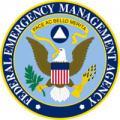FHA Reverse Mortgage
Established in 1934, The Federal Housing Administration (FHA) offers mortgage insurance on loans through FHA-approved lenders. The FHA provides this coverage for single and multi-family homes, and other approved purchases. The FHA does not issue loans, but FHA mortgage insurance is quite attractive for a prospective lender.
The main reason for this is simple; FHA mortgage insurance protects the lender's investment should a homeowner default on the mortgage. Loans insured by the FHA feature low down payments, and costs for FHA mortgage insurance are built into the mortgage payment. Those costs disappear five years into the loan or when the loan reaches 78% of the property value (whichever is longer).
An FHA reverse mortgage is designed for homeowners age 62 and older. It allows the borrower to convert equity in the home into income or a line of credit. The FHA reverse mortgage loan is also known as a Home Equity Conversion Mortgage (HECM), and is paid back when the homeowner no longer occupies the property.
There are requirements for an FHA-insured reverse mortgage or HECM;
- The loan is based on the age of the youngest borrower if there are co-signers.
- Homeowners are required to get consumer counseling and education before a HECM loan is approved.
- Borrowers must own and live on the property as the primary residence.
Unlike other FHA loans, there are no income or credit qualifications for this type of loan. You will be required to have a current appraisal on the property as the amount of an FHA reverse mortgage is based on the home's value or the FHA insurance limit, whichever is lower. The FHA reverse mortgage;
- Is a loan based on current interest rates.
- Allows closing costs to be financed in the reverse mortgage.
- Is for single-family homes or up to a four-unit home, but must be occupied by the borrower.
- Is also permitted for FHA-approved condominiums and manufactured homes.
FHA reverse mortgages or HECM loans require the home to conform to FHA property standards and flood requirements. The FHA reverse mortgage has a variety ways the borrower can receive the money including monthly payments, a line of credit, or combinations of payments and credit. The borrower does not pay on these loans until the house is sold. The loan is repaid from the proceeds of the property sale including interest. Any remaining equity in the home after the loan has been repaid belongs to the homeowner.
If there is not enough money from the sale of the home to repay the loan in full, FHA insurance is used to pay the difference. If you need further clarification of the details of an FHA reverse mortgage, ask your loan officer to explain before you sign.




